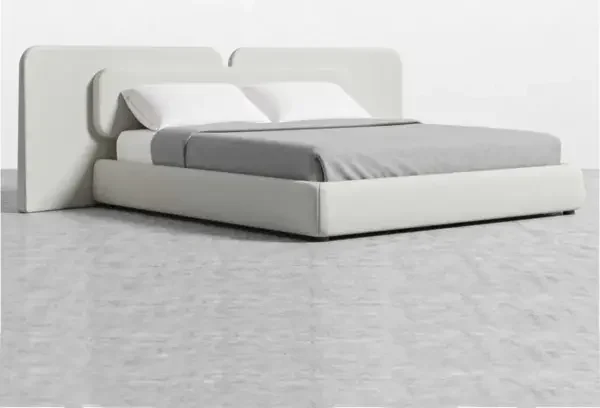Furniture isn’t just something you use; it also makes your home more stylish, comfortable, and unique. Sofas, chairs, and other upholstered furniture can start to show signs of wear and tear over time. At this point, a lot of people who own homes wonder, “Should I reupholster it or get a new one?” Choosing the right thing is important for many reasons, including looks, comfort, cost-effectiveness, and the environment. This article will help you think about your options, learn about the pros and cons of each one, and make a smart choice.
- What does it mean to reupholster?
- Advantages of Reupholstering
- When it makes sense to reupholster
- Getting to Know Replacement
- When it makes sense to replace
- Things to think about when it comes to cost
- Things to think about before you make a choice
- How to Reupholster Successfully
- How to Choose New Furniture
- Looking at it from an environmental point of view
- Questions and Answers
- The Last Choice
What does it mean to reupholster?
Reupholstering means changing the fabric, padding, and sometimes even the springs or frame of your furniture. In short, it gives your old piece a new life while keeping its shape.
Advantages of Reupholstering
1. Good furniture at a low price
Reupholstering can be cheaper than buying a new, high-end piece of furniture, even though the initial cost may seem high. In the long run, it’s usually a better investment to buy antique or well-made furniture.
2. Options for customization
When you reupholster, you can pick out fabrics, colors, and patterns that go perfectly with your current decor. You can update a classic piece or change its style completely to fit changing tastes.
3. Good for the environment
Reupholstering your furniture makes it last longer, which cuts down on waste. This choice is good for the environment and helps you leave a smaller environmental footprint.
4. Keeps the sentimental value
Some pieces are important to history or to people’s feelings. You can keep memories alive while giving your furniture a new look by reupholstering it.
When it makes sense to reupholster
Reupholstering is the best choice when:
- The frame of the furniture is strong and long-lasting.
- The item is old, high-quality, or one of a kind.
- You like the way the current furniture looks and feels.
- Reupholstering is cheaper than buying a new piece of furniture of the same quality.
If your furniture has small tears, worn-out fabric, cushions that are sagging, or patterns that are out of style, it may need to be reupholstered. An experienced upholsterer can make something look brand new if the frame is still in good shape.
Getting to Know Replacement
When you replace furniture, you buy a new piece that fits your style, needs, and comfort level. If your furniture is badly damaged or no longer fits your lifestyle, this option may be better.
Benefits of Getting a New One
1. Modern features and functions
New furniture often has better ergonomics, is more durable, and has features like built-in charging ports or storage compartments.
2. A way to save time
It can take weeks to reupholster something, but buying new furniture gives you instant satisfaction.
3. Less upkeep
At first, new furniture doesn’t need much care, but reupholstered
furniture may need to be cleaned or touched up from time to time.
4. New Look
Replacement lets you follow the latest home decor trends without any restrictions.
When it makes sense to replace
- When to think about replacement:
- The frame or structure is so broken that it can’t be fixed.
- Reupholstering or fixing something costs more than buying a new one.
- The style is out of date or doesn’t fit with the way your home is decorated now.
- You need furniture right away, not after it has been reupholstered.
If your furniture has broken legs, stains or burns that can’t be fixed, smells that won’t go away, or repairs that keep happening, it’s time to get a new one.
Things to think about when it comes to cost
It’s important to know how much things cost when deciding whether to reupholster or buy new ones.
Depending on the size, fabric, and difficulty of the job, reupholstering can cost anywhere from $500 to $2,000 or more. This choice is usually the best value for money when it comes to high-quality or antique furniture. Depending on the brand, material, and style, replacement costs can range from $300 to more than $3,000. Even though replacement may seem cheaper at first, high-quality options often cost more, so reupholstering is a better long-term investment.
Also, time is a factor. Reupholstering usually takes 2 to 6 weeks, but replacement can happen right away, depending on when the new furniture arrives.
Things to think about before you make a choice
1. The quality of the original furniture
It is worth keeping frames made of solid wood and built to last. Reupholstering furniture that isn’t very good may not work.
2. Money
Get several quotes for reupholstering and look at the costs of replacing items. Make sure the quality is good while staying within your budget.
3. Emotional Value
Family heirlooms or old things that are important to you or to history are often worth reupholstering.
4. What you like in style
If your design goals have changed a lot, getting new furniture might fit better with your home decor.
5. Effects on the environment
Reupholstering is better for the environment because it cuts down on waste in landfills and saves resources.
How to Reupholster Successfully
Choose Fabrics That Last: Linen, velvet, or leather are good choices for fabrics that will last.
Hire Experienced Professionals: Skilled upholsterers make sure that the finish is perfect and lasts a long time.
Upgrade Padding and Cushions: To make things more comfortable and look better, replace old padding.
Check the stability of the frame: Make sure the structure underneath is strong enough to handle the process.
How to Choose New Furniture
Try it out: Sit on the furniture before you buy it. Long-term happiness depends on comfort.
Measure your space to make sure the new piece fits perfectly and doesn’t take up too much room.
Put Quality First: Buy frames that are strong and fabrics that will last.
Check the warranty: Warranties give you peace of mind for problems that may come up in the future.
Looking at it from an environmental point of view
Many homeowners today care about sustainability. Reupholstering is good for the environment because it cuts down on waste and doesn’t require the use of a lot of resources to make new furniture. Sometimes it’s necessary to replace something, but doing so has a bigger impact on the environment because of the new production and transportation.
Questions and Answers
1. How can I tell if my furniture can be upholstered again?
Make sure the frame and springs are strong. Reupholstering is possible if the frame is strong.
2. Is it cheaper to reupholster than to buy new furniture?
It all depends on how good it is. Reupholstering is often a better deal for high-end or antique furniture.
3. How long does it take to reupholster?
It usually takes 2 to 6 weeks, but it depends on how hard the project is.
4. Can I pick any fabric to reupholster?
You can choose fabrics that fit your style and budget, yes.
5. When should I buy new furniture instead of reupholstering it?
If the frame is broken, the style is out of date, or the cost of repairs is too high, get new furniture.
6. Is it good for the environment to reupholster?
Yes, it cuts down on waste and is a more eco-friendly way to get new furniture.
7. Can reupholstering make things more comfortable?
Yes, for sure. Adding new padding and cushions can make things look and feel better.
8. How much does it usually cost to buy new furniture?
Depending on the quality and style, it can cost anywhere from $300 to $3,000 or more.
9. Will reupholstering make the furniture last longer?
Yes, furniture that has been professionally reupholstered can last 10 to 20 years or more.
10. Do I need to hire a pro to reupholster?
Yes, experienced professionals make sure that the work lasts and looks great.
The Last Choice
Ultimately, whether to reupholster or buy new furniture depends on a number of things, including the quality of the furniture, your budget, your style, and your long-term goals. Reupholstering is a good option for high-quality, sentimental, or antique items because it is long-lasting. If your furniture is very damaged, old, or not very good, it’s better to replace it. This will instantly make it look better. You can make a choice that makes your home more comfortable, attractive, and useful by carefully weighing these factors.





